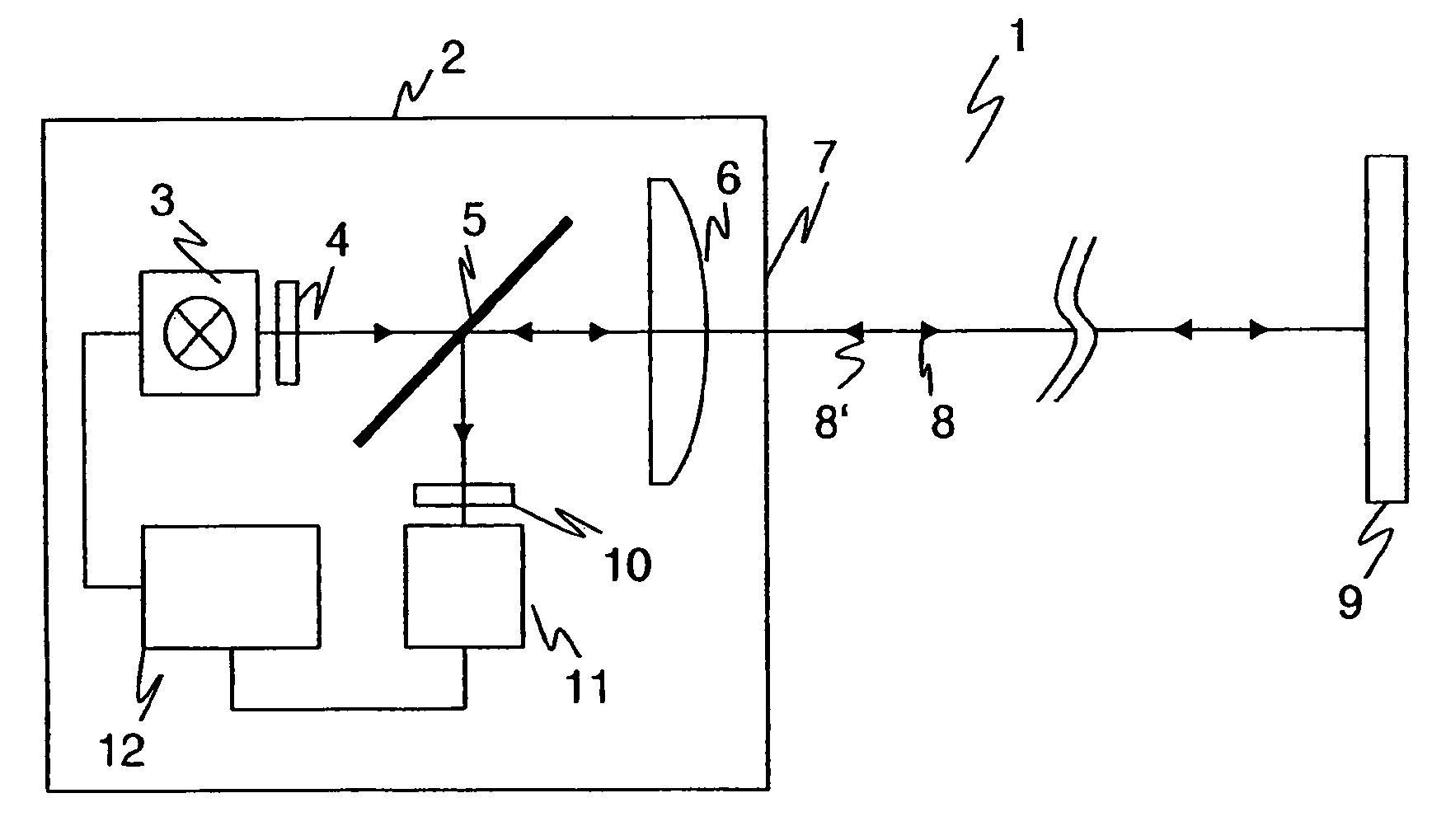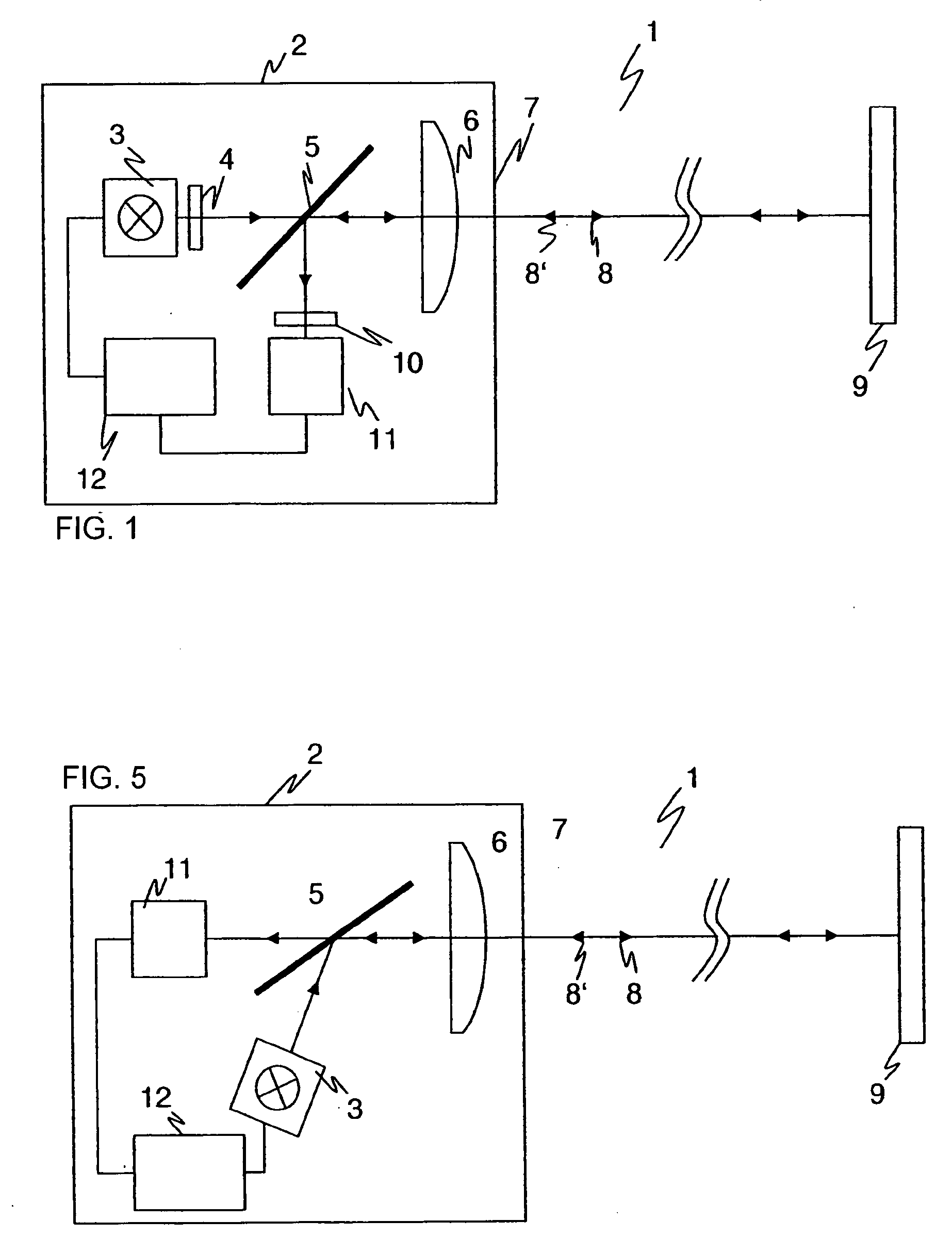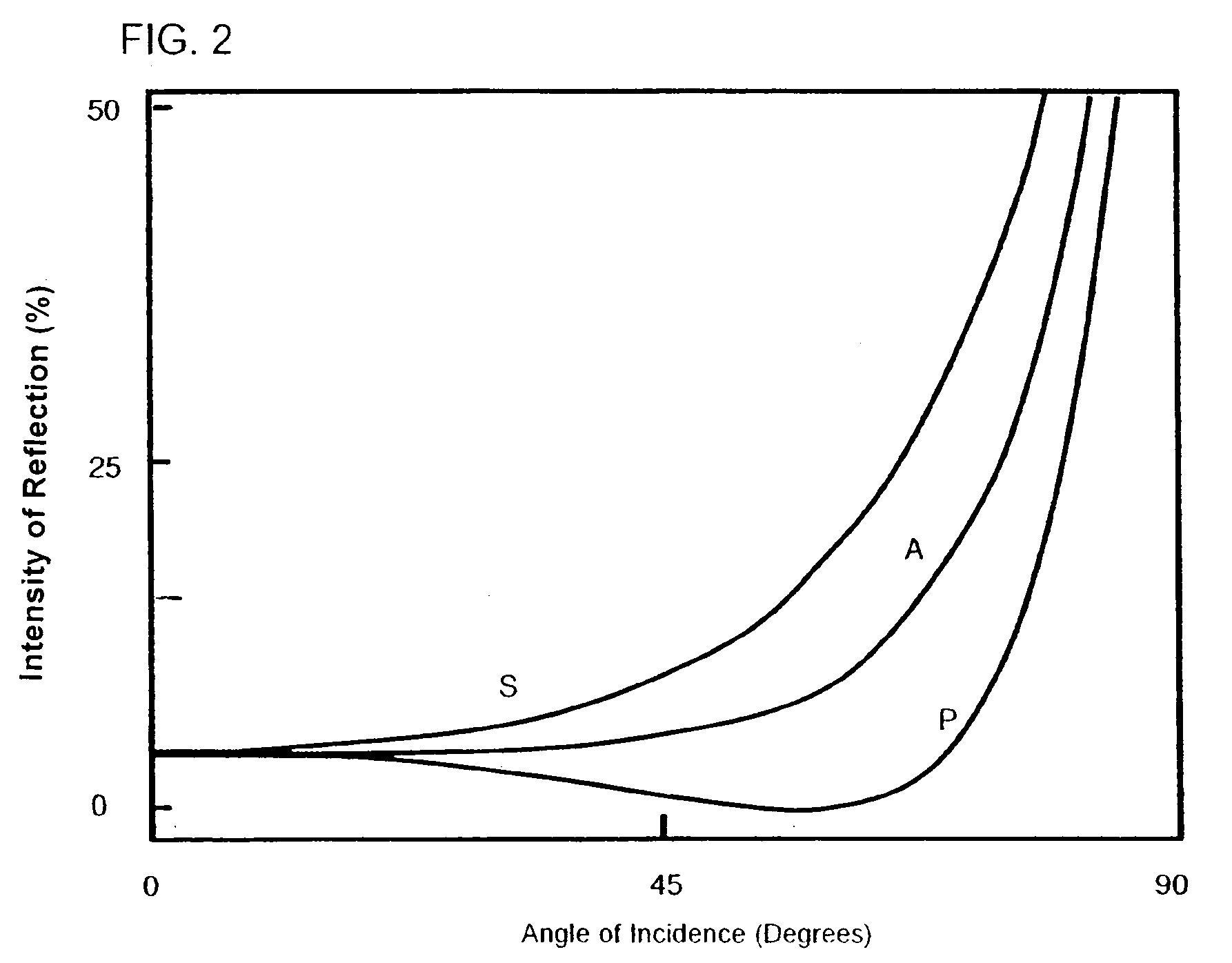Optoelectronic sensor and method for detecting objects with polarized light
a technology of optoelectronic sensors and objects, applied in the field of optoelectronic sensors and methods, can solve the problems of saving significant costs, and achieve the effects of preventing optical overlays or adverse effects, facilitating manual adjustments, and increasing the reach of the sensor
- Summary
- Abstract
- Description
- Claims
- Application Information
AI Technical Summary
Benefits of technology
Problems solved by technology
Method used
Image
Examples
second embodiment
[0056]FIG. 5 shows the present invention. It is similar to the embodiment shown in FIG. 1, and the same reference numerals are used for like elements. The underlying principle of the invention and the advantages derived therefrom remain the same.
[0057]In contrast to the first embodiment of the invention, the optical axis of light source 3 in this second embodiment of the invention is the Brewster angle relative to beam splitter 5, which, for glass, is 56%. This way the beam splitter simultaneously acts as polarizer 4 because with the Brewster angle only s-polarized light is reflected into light transmission path 8. Following the turning reflection at retroreflector 9, also under the Brewster angle, the now p-polarized reflected light is completely transmitted by beam splitter 5. In this manner, the polarization filter 10 can be eliminated and the beam splitter 5 simultaneously functions as beam splitter, polarizer and polarization filter 10.
first embodiment
[0058]Contrary to the first embodiment, the optical axes of light source 3 and light receiver 11 are not perpendicular to each other. They are arranged so that the light in light transmission path 8 and light reflection path 8′ are at the Brewster angle. The angle, at which the optical axes of light source 3 and light receiver 11 must be positioned, can be calculated with elementary geometry as 180°-2*Brewster angle.
[0059]Thus, the second embodiment of the present invention has the additional advantage that separate polarizers and polarization filters can be eliminated, which provides significant cost savings.
PUM
 Login to View More
Login to View More Abstract
Description
Claims
Application Information
 Login to View More
Login to View More - R&D
- Intellectual Property
- Life Sciences
- Materials
- Tech Scout
- Unparalleled Data Quality
- Higher Quality Content
- 60% Fewer Hallucinations
Browse by: Latest US Patents, China's latest patents, Technical Efficacy Thesaurus, Application Domain, Technology Topic, Popular Technical Reports.
© 2025 PatSnap. All rights reserved.Legal|Privacy policy|Modern Slavery Act Transparency Statement|Sitemap|About US| Contact US: help@patsnap.com



